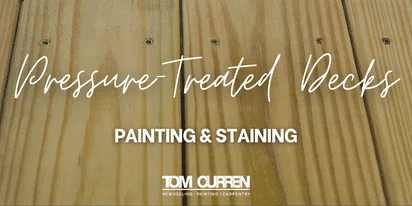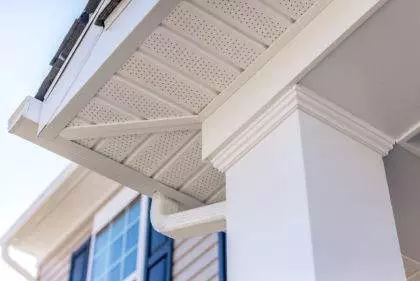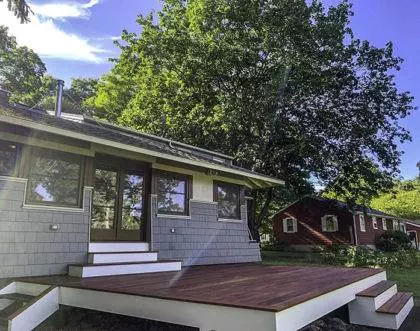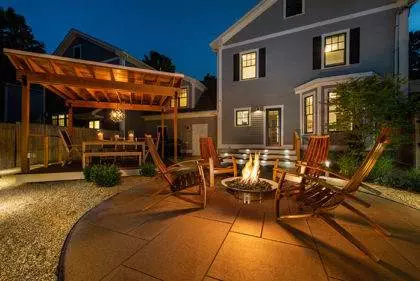Do you know what pressure-treated wood is? You might be able to guess based on the name… Pressure-treated wood is a type of wood that has been specially treated to withstand environmental conditions and resist decay and insect damage. The wood is treated with preservatives and fire retardants that enhance the lumber’s durability and longevity. During the treatment process, the wood is placed in a sealed chamber where it is subjected to high-pressure injections of chemicals, typically copper-based compounds, that provide protection against termites, fungal decay, and other destructive organisms. In contrast, other types of construction wood lack the added protection against decay and insects, making them vulnerable to rotting, insect infestation, and warping when exposed to moisture over time. The use of pressure-treated wood is common in outdoor structures like decks, fences, and gardens, where the material is subjected to constant exposure to the elements. Its ability to withstand moisture, resist decay, and deter insects makes it a reliable choice for long-lasting and durable construction projects.
Despite having a longer lifespan than other types of lumber, pressure-treated wood is still susceptible to aging. The UV rays from sunlight produce a chemical reaction within the pressure-treated wood that causes photochemical degradation, eventually leading to the bleaching of the wood– turning it gray in color. When your deck starts looking a little gray, it’s time to refinish it! Give your deck a brand new look with a fresh coat of paint.
How long should you wait to paint a new pressure-treated deck?
When it comes to painting a pressure-treated deck, patience is key. The waiting period before painting a new pressure-treated deck is crucial because the wood needs time to acclimate and dry out. Initially, pressure-treated wood contains a high moisture content due to the treatment process, and painting too soon can trap moisture within the wood, leading to peeling, blistering, or premature failure of the paint or stain. It’s essential to allow the wood to dry out completely before proceeding with any finishing application.
Typically, the recommended waiting time before painting a pressure-treated deck is around six to eight weeks. However, there are several factors that you should take into consideration that will affect the drying times, such as climate, and humidity levels. In humid or wetter climates, it may take longer for the wood to dry. Ideally, you’ll want the humidity levels of the wood to be under 15%, but to determine if your deck is ready for painting, you can perform a simple water droplet test. Sprinkle a few drops of water onto the surface of the wood, and if the water beads up and sits on top of the wood, then it’s an indication that the moisture content is still too high, and you should wait a bit longer. On the other hand, if the water is absorbed and darkens the wood, it means the surface is ready for painting!
Is it better to stain or paint pressure-treated wood?
When it comes to finishing pressure-treated wood, the decision between staining or painting largely depends on your desired aesthetic and maintenance preferences. Staining pressure-treated wood is a popular choice for those who want to showcase the natural beauty of the wood grain while still protecting the wood. Stains are available in various shades, allowing you to achieve different looks while enhancing the wood’s natural appearance. Stains penetrate the wood, enhancing its natural color and providing a subtle transparent finish. This allows the wood’s texture and grain patterns to shine through, creating a more rustic and organic look. Additionally, stains provide some degree of UV protection and help repel water, preventing the wood from cracking or warping due to moisture absorption. However, stains may require more frequent reapplication compared to paint, as they tend to wear off over time.
On the other hand, painting a pressure-treated wood offers a wider range of color options and provides a more consistent, opaque finish. Paint creates a protective layer on the surface of the wood, shielding it from moisture, sunlight, and other environmental factors. This added layer of protection can help prolong the lifespan of the wood and reduce the frequency of maintenance.
Ultimately, the decision between staining and painting pressure-treated wood depends on your personal preferences, the look you want to achieve, and the level of maintenance you’re willing to undertake.
Do you need to wash a new deck before painting?
Yes, generally, it’s recommended that you wash a new deck before painting. Although a new deck may appear clean and ready for a fresh coat of paint, it’s important to remember that various contaminants can accumulate on its surface during construction. Dust, dirt, pollen, oils, and other residues may have settled on the deck, making it necessary to thoroughly wash and prepare the surface. By doing so, you ensure optimal paint adhesion and longevity of the finished result.
Remember – after washing your deck, proper drying time is crucial to ensure optimal adhesion and prevent trapping moisture within the wood. By taking the time to wash and prepare your deck before painting, you create a clean, receptive surface that allows the paint to adhere properly. This step sets the foundation for a beautiful, long-lasting finish that will enhance your deck’s beauty and protect it for years to come.
How do you update a painted deck?
Updating a painted deck can be a great way to revitalize its appearance and extend its lifespan, whether you want to change the color, freshen up the existing paint, or address wearing and tearing. Whether you’ve noticed deterioration of your paint, or you just want a change of color, the first step to updating a painted deck is an inspection for any damaged or rotted wood. Similar to our exterior painting process, we always inspect the wood we’re going to be painting– because we never want to paint over a compromised surface. After addressing any carpentry damage, your deck should be sanded to create a smooth and even surface for the paint to adhere to.
READ OUR
Related Articles
Locations






